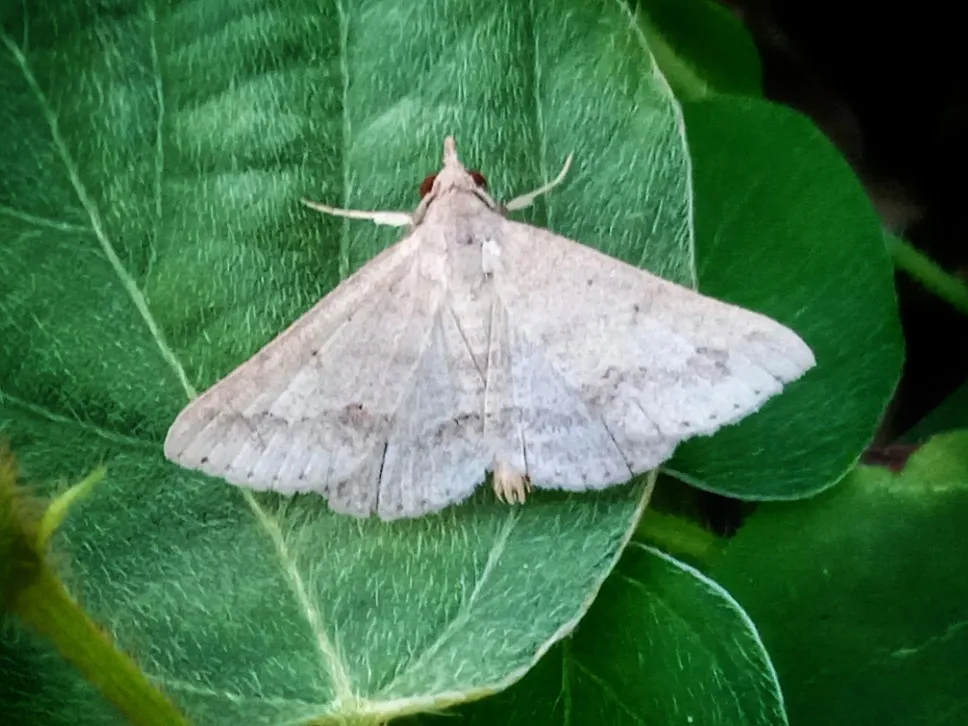Hi all... How are you today? Of course very good There are so many insects that exist on this earth, whether they are flying insects or insects that have wings but rarely use them. Almost millions of species have been found but not all of them can be identified, the number of millions includes very fine species in the soil or in the air or in certain plants


Although there are pictures of various types of moths, like a journal concerning a scientific work, especially with the addition of butterflies, in this post, however, I do not tell them about it, or a scientific description, in depth and specifically. Why? Because the information I know about them, is very little. I'm just saying globally for a few moths seen in our area.
For almost a month, I kept these photos on my personal smartphone with the aim of collecting their shapes and profiles in the life that every moth has experienced, especially the small and charming ones. After all, in my domicile location, finding it is very difficult and susah.
Another reason, why it is not explained scientifically, is because there are many versions of its description in the insect world, even though basically the meaning of the experts is the same and has one goal. So to stand in a safe position about it, then I conclude to talk about it simply, of course in my everyday vision, or can be termed as an initial and new observation in seeing their characters every day, especially in the afternoon.
So, therefore, if there is a difference in my vision you can understand, since this is a new survey, and I just found it. All right... Let's see...
1. The first day of finding the White Moth

This white anticarsia, I adopted from the opinion of zoologists in identifying it. But I have my own name, of course in our non-verbal language here, and I myself often named it as a child, namely Lonely White
Why? I call it by that name, this thing, I have my own reasons for giving a name, of course referring to his behavior that is always aloof or often stays away from his own flock even though he is still in the same family.
The behavior that always distances itself from each group has occurred in their respective behavior, and I have seen that behavior since I was a child until today, the character has not changed, still relying on old patterns.


Its very small size is one of the things that is very difficult to find, especially when it is perched in a thick bush of wild leaves. Especially in the morning, they are only seen when the sun has started to sink, maybe that time is the beginning of starting their activities. So it is very appropriate to say they are active at night.
Its unique wing pattern makes people glance at it when you see it, if you are an insect lover, but if you are not a lover of course you will ignore it.
2. Second week since meeting the white moth

Almost a week I have not visited a similar location as the location of every tiny moth with a variety of colors and patterns. In the afternoon also met another moth with a brown color with a triangular shape like a child's kite. When I searched for the name on Google search engine, it turned out that the zoologists mentioned it in their own language as Melipotis
Although the experts have given a name that suits their respective characteristics, but I also don't understand it specifically. But I still have my own name so I can easily remember, of course in my own language, in the form of Kite Moth
Why I put it that way, because referring to his behavior when he flies, it is very similar to a kite that is in the open air when it does not find the wind, the chronologically it will fly out of balance.


It's very rare to see them flying like butterflies, but try to disturb him when he is perched on one of the small leaves, by making movements so that he is not calm, it turns out that when he moves by hovering his body, his wings are not visible like a butterfly. However, he still flies even though he is not far away, this is very difficult to see with a normal human eye (no visible flapping of wings), but he still flies.
3. Two days after finding the Melipotis Moth

This one, is a tiny moth that is most commonly seen in our area, although they are often in the foliage area during the day, but often visit people's homes. They love pure white light, I don't know what they're looking for, sometimes perched on our porch light bulbs.
Sometimes they are also in swarms of termites who both love the light.
But unfortunately they are often victims of the heat of the lamp that cannot adapt to their bodies, sometimes they die from sticking to the light bulb, now here they will become food for small lizards that have been waiting for their presence on a wall.

I was confused to find its scientific name in general, but thanks to these efforts, I found it on one of the Google lenses, in that search I found its name, namely Hypena proboscidalis
It is not known by the name of the nonverbal language of the people here, they only call the brown moth which refers to the color. So I also don't mention it in nonverbal language because it already has its own name even though it is a color and also a name that has been given by zoologists.
If you are confused then just say it in your own non-verbal language namely little chocolate moth


If I compare between every small moth that has been mentioned above, then this brown moth is one of the moths that has a smaller size than them. The calculation is like?
If the white moth and kite moth measure 1 cm, then the brown moth is 0.8 cm. In essence the size has the smallest rank with other common moths.
4. After that day

The next day it found no more in any other species, and I turned to the common plain tiger butterfly, which often dominates their territory including the moths mentioned earlier.
This butterfly, has the highest rank in the region, meaning that their population here is very large, and can be found in almost any village, as long as there are wild plants or other, of course it will always seem to dominate every area.
They are like the natives who always control every land, the group is so large that it beats the dominance of other insects, they always control the upper area, while the small moths always hide under the thick wild leaves that grow in groups.
They are very easy to find during the day but not visible at night. Therefore, it is very appropriate if experts argue that, "butterflies are active during the day, while moths are active at night" the difference in the character of these two insect species, becomes a reference for distinguishing butterflies and moths.

The white moth, kite moth, brown moth (our language is non-verbal, not scientific) and the common plain tiger butterfly, these four species are frequently seen in our area, while others are not seen again, whether others have been moved to the interior of the forest or whether they have become extinct, I don't understand it myself
Hopefully in your area there are still species other than these four. Why? Because when there are other species in your area, then the state of a country is still classified as a natural state.
All the writings that have been written there are my daily vision, not in the view of scientific insights such as information that has been conveyed by zoologists or other related bodies.
If, there are also some terms in scientific language, it is the adoption of information that has been published by the respective observation teams or from zoologists. Meanwhile, I myself am only quoting their words, not from my own observations. Hopefully your like it


| Photo and Text Captions | ✎ & 📸 |
|---|---|
| 🅿🅾🆂🆃 🆃🅸🆃🅻🅴 | Takeng a peek at some of the characters from flying insect species |
| soʇoɥԀ ɐɹǝɯɐƆ | VIVO Y30i |
| 💥 𝕃𝕠caţเØnˢ 𝓅H𝐨𝓣o⌖ | Aceh, Indonesia |
| 𝗪𝗿𝗶𝘁𝗶𝗻𝗴 𝗗𝗲𝘀𝗰𝗿𝗶𝗽𝘁𝗶𝗼𝗻 | 𝕆𝕨𝕟 𝕨𝕣𝕚𝕥𝕚𝕟𝕘 |

